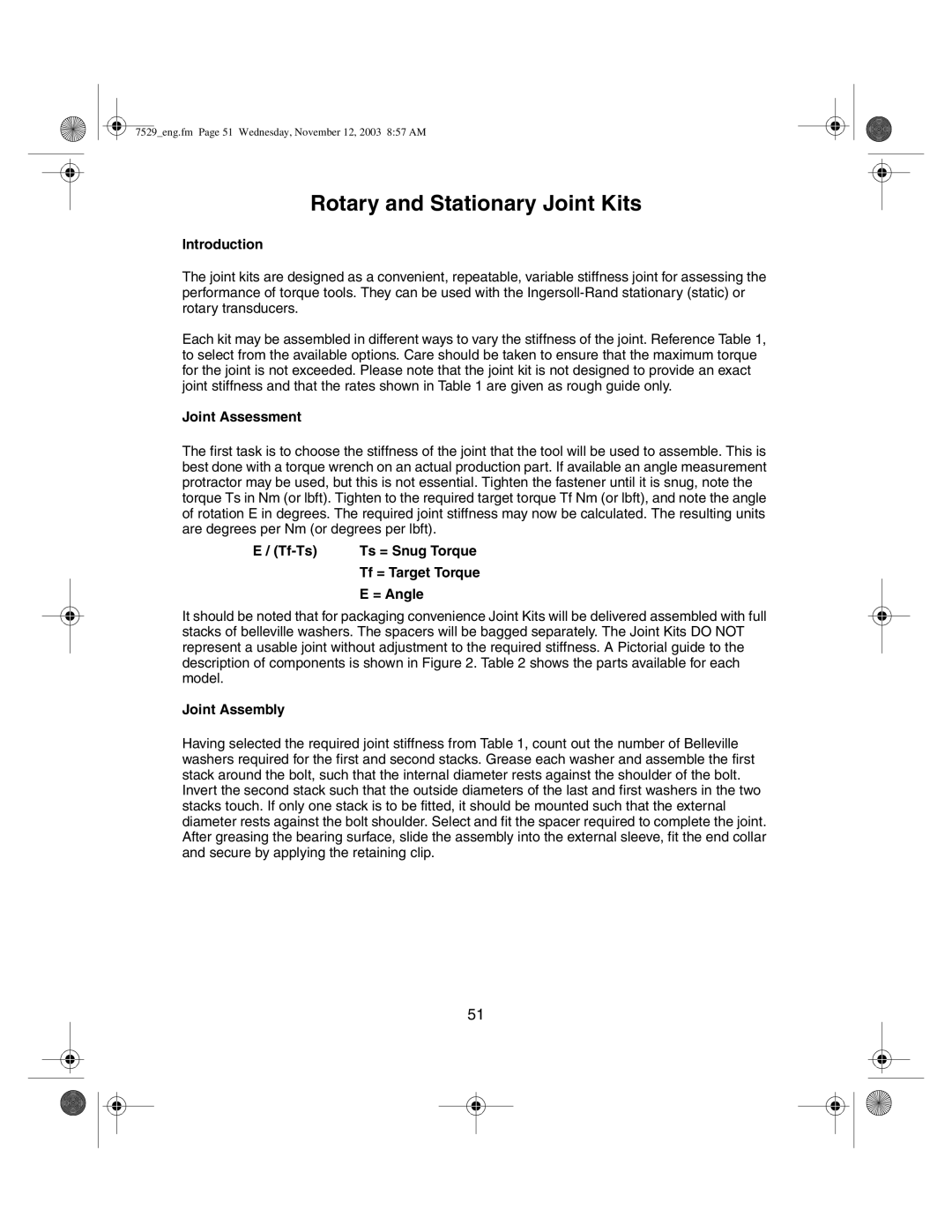
7529_eng.fm Page 51 Wednesday, November 12, 2003 8:57 AM
Rotary and Stationary Joint Kits
Introduction
The joint kits are designed as a convenient, repeatable, variable stiffness joint for assessing the performance of torque tools. They can be used with the
Each kit may be assembled in different ways to vary the stiffness of the joint. Reference Table 1, to select from the available options. Care should be taken to ensure that the maximum torque for the joint is not exceeded. Please note that the joint kit is not designed to provide an exact joint stiffness and that the rates shown in Table 1 are given as rough guide only.
Joint Assessment
The first task is to choose the stiffness of the joint that the tool will be used to assemble. This is best done with a torque wrench on an actual production part. If available an angle measurement protractor may be used, but this is not essential. Tighten the fastener until it is snug, note the torque Ts in Nm (or lbft). Tighten to the required target torque Tf Nm (or lbft), and note the angle of rotation E in degrees. The required joint stiffness may now be calculated. The resulting units are degrees per Nm (or degrees per lbft).
E / | Ts = Snug Torque |
| Tf = Target Torque |
| E = Angle |
It should be noted that for packaging convenience Joint Kits will be delivered assembled with full stacks of belleville washers. The spacers will be bagged separately. The Joint Kits DO NOT represent a usable joint without adjustment to the required stiffness. A Pictorial guide to the description of components is shown in Figure 2. Table 2 shows the parts available for each model.
Joint Assembly
Having selected the required joint stiffness from Table 1, count out the number of Belleville washers required for the first and second stacks. Grease each washer and assemble the first stack around the bolt, such that the internal diameter rests against the shoulder of the bolt. Invert the second stack such that the outside diameters of the last and first washers in the two stacks touch. If only one stack is to be fitted, it should be mounted such that the external diameter rests against the bolt shoulder. Select and fit the spacer required to complete the joint. After greasing the bearing surface, slide the assembly into the external sleeve, fit the end collar and secure by applying the retaining clip.
51
